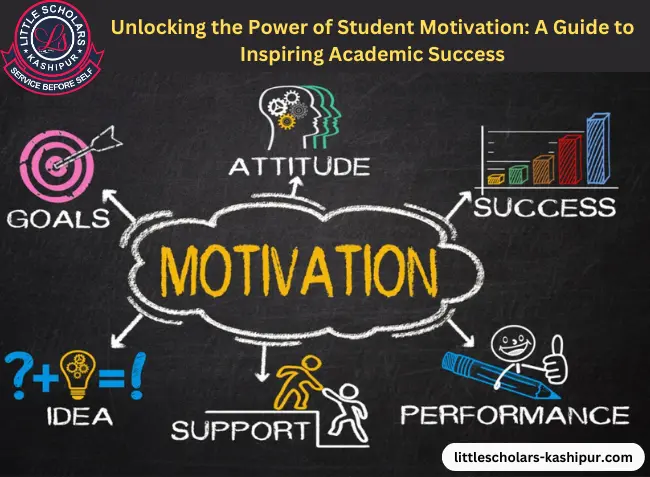In today's fast-paced world, motivating students has become a critical aspect of education. Motivation is the driving force behind students' desire to learn, achieve, and excel. Whether you're a teacher, parent, or mentor, understanding how to ignite this spark can make a significant difference in a student's academic journey. This blog will explore the nuances of student motivation, offering insights and practical tips to foster a positive learning environment.
Understanding Student Motivation
The Importance of Motivation
Motivation is the cornerstone of academic success. It influences a student's willingness to engage with their studies, persevere through challenges, and strive for excellence. Two primary categories of motivation exist:
Motivation from within: This kind of drive originates internally. Students are driven by their own curiosity, interest, and enjoyment of learning. They find satisfaction in the process rather than the outcome.
1. Extrinsic Motivation: This type of motivation is fueled by external factors such as rewards, grades, or recognition. While effective in the short term, it may not sustain long-term engagement unless coupled with intrinsic motivation.
The Role of Teachers and Parents
Teachers and parents play a pivotal role in shaping a student's motivation. Their support, encouragement, and understanding can create an environment where students feel valued and inspired to learn. Here are some strategies to enhance student motivation:
Practical Tips to Motivate Students
1. Set Clear and Achievable Goals
Students gain a sense of meaning and direction when they are given well-defined, attainable goals. These goals should be specific, measurable, and tailored to the student's abilities. For instance, instead of saying, "Do your best," a more effective goal would be, "Complete your math homework by 5 PM."
2. Provide Constructive Feedback
Feedback is a powerful tool in motivating students. Constructive feedback highlights strengths and areas for improvement, fostering a growth mindset. Celebrate small victories and encourage students to learn from their mistakes. This method fosters a positive perspective on learning and resistance.
The Effect of Arts Education on Student Development: Read now
3. Create a Positive Learning Environment
For students to be motivated, the classroom environment must be welcoming and positive. Encourage collaboration, respect, and open communication. Use positive reinforcement to acknowledge good behavior and academic achievements. A supportive atmosphere makes students feel safe and valued, enhancing their willingness to participate and learn.
4. Incorporate Varied Teaching Methods
Different students have different learning styles. Incorporating a variety of teaching methods—such as visual aids, interactive activities, and hands-on projects—can cater to diverse preferences and keep students engaged. This variety not only makes learning more enjoyable but also helps students retain information better.
5. Foster a Growth Mindset
A growth mindset is the belief that abilities and intelligence can be developed through effort and practice. Motivate your kids to rise to the occasion, endure hardships, and see setbacks as stepping stones to success. Teach them that effort and dedication are the keys to success.
6. Connect Learning to Real-Life Situations
Students are more motivated when they see the relevance of what they're learning. Connecting lessons to real-life situations or their personal interests can make learning more meaningful. For example, use real-world examples in math problems or relate historical events to current issues.
7. Encourage Self-Reflection
Self-reflection helps students understand their learning processes and identify areas for improvement. Encourage students to set personal goals, monitor their progress, and reflect on their achievements. This practice promotes self-awareness and intrinsic motivation.
Exploring the Wonders of Biodiversity Hotspots: Preserving Nature's Treasures: Read now
Overcoming Common Challenges
Dealing with Disinterest
It's common for students to experience periods of disinterest or lack of motivation. To address this, try to understand the root cause. It could be related to the subject matter, teaching method, or personal issues. Adapt your approach by incorporating elements that capture their interest and providing additional support if needed.
Balancing Extrinsic and Intrinsic Motivation
While extrinsic rewards can be effective, relying solely on them can undermine intrinsic motivation. Strive to balance both by using rewards as a complement to fostering a genuine interest in learning. For instance, praise effort and improvement rather than just outcomes.
Conclusion
Motivating students is an ongoing process that requires patience, understanding, and creativity. By setting clear goals, providing constructive feedback, creating a positive learning environment, and fostering a growth mindset, teachers and parents can inspire students to reach their full potential. Remember, the journey of learning is just as important as the destination. With the right support and encouragement, every student can unlock their innate motivation and achieve academic success.




